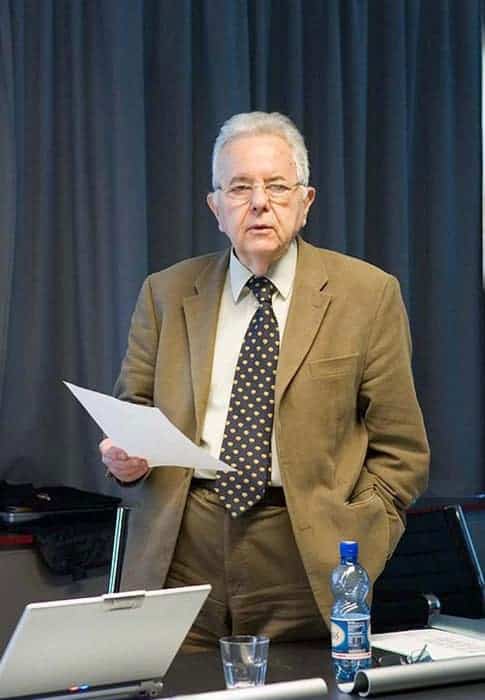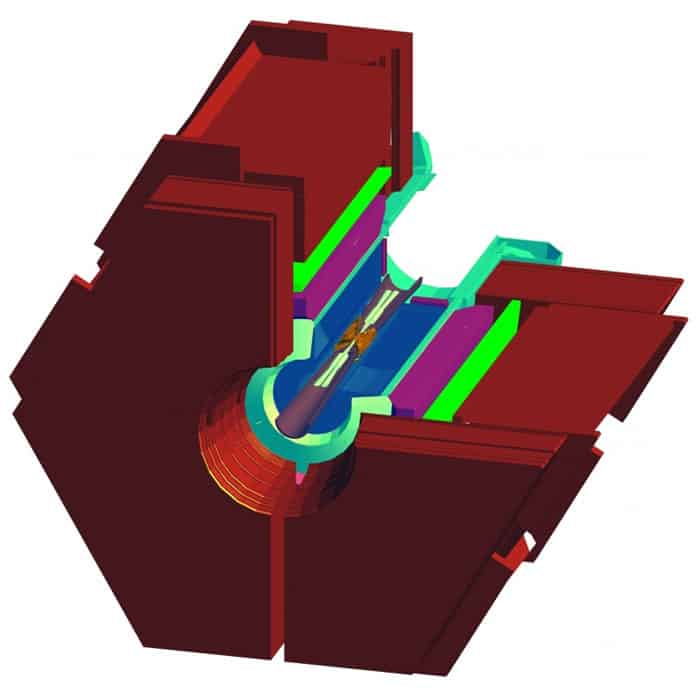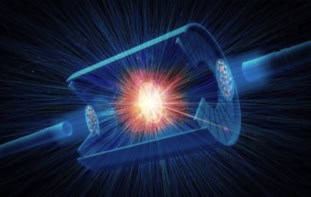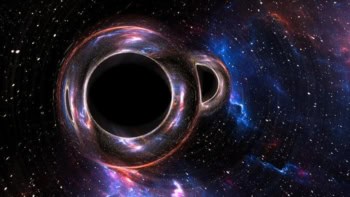
The SuperB particle collider will be built at the University of Rome, Tor Vergata. Located on the outskirts of the Italian capital, the site will be called the Cabibbo Laboratory in honour of the particle physicist Nicola Cabibbo, who died in August 2010. The experiment is expected to start collecting data in 2017.
The €500m SuperB facility will be built by Italy’s National Institute for Nuclear Physics (INFN) with funds provided by the host nation and several other countries. It will consist of a 2 km circumference ring with two accelerators – one for electrons and the other for positrons. Collisions will occur within a large detector and produce extensive numbers of B-mesons, D-mesons and tau-leptons. The detector will track the decay products from these particles and measure their energy.
Change of location
The original plan was to locate SuperB at the INFN’s Frascati campus just outside Rome. However, a decision taken in 2010 to include a synchrotron-radiation facility within SuperB meant that the Frascati site was too small.
Now, the INFN has decided to locate SuperB on a 30 hectare site at Tor Vergata, which is about 4.8 km from the Frascati lab. The larger site will make it much easier to include up to six synchrotron beam lines and associated experimental halls.
The next step for SuperB physicists is to set up a European Research Infrastructure Consortium (ERIC) to build the facility. ERIC is a new organizational structure available to European physicists and SuperB will be the first project to create such a set-up.
Watching tau leptons
According to Adrian Bevan of Queen Mary University of London – who is part of the UK’s SuperB contingent – the collider will produce about 100-times more data than other “B factories” such as BaBar in the US, which stopped running in 2008, and Belle in Japan.
SuperB will produce large numbers of tau-leptons – and one of the first things physicists will look for is “charged lepton flavour violation” such as a tau-lepton decaying into three muons without producing any neutrinos. The observation of such decays would point to new physics beyond the Standard Model.
Bevan told physicsworld.com that SuperB should be completed in 2016 and start taking data in 2017. He expects the experiment to run for about 10 years before the facility is converted into a dedicated synchrotron light source that could run for an additional 20 years.
Introduced the “Cabibbo angle”
Cabibbo was best known for his work on the weak interaction in quarks and was recognized for his contribution to “quark mixing” between different favours of these particle. In 1963 he introduced the “Cabibbo angle” that is related to the relative probability that down and strange quarks decay into up quarks. Cabibbo’s 2 × 2 quark-mixing matrix was later extended to include a third generation of quarks by the Japanese physicists Makoto Kobayashi and Toshihide Maskawa, who then shared the 2008 Nobel Prize for Physics together with theorist Yoichiro Nambu.




